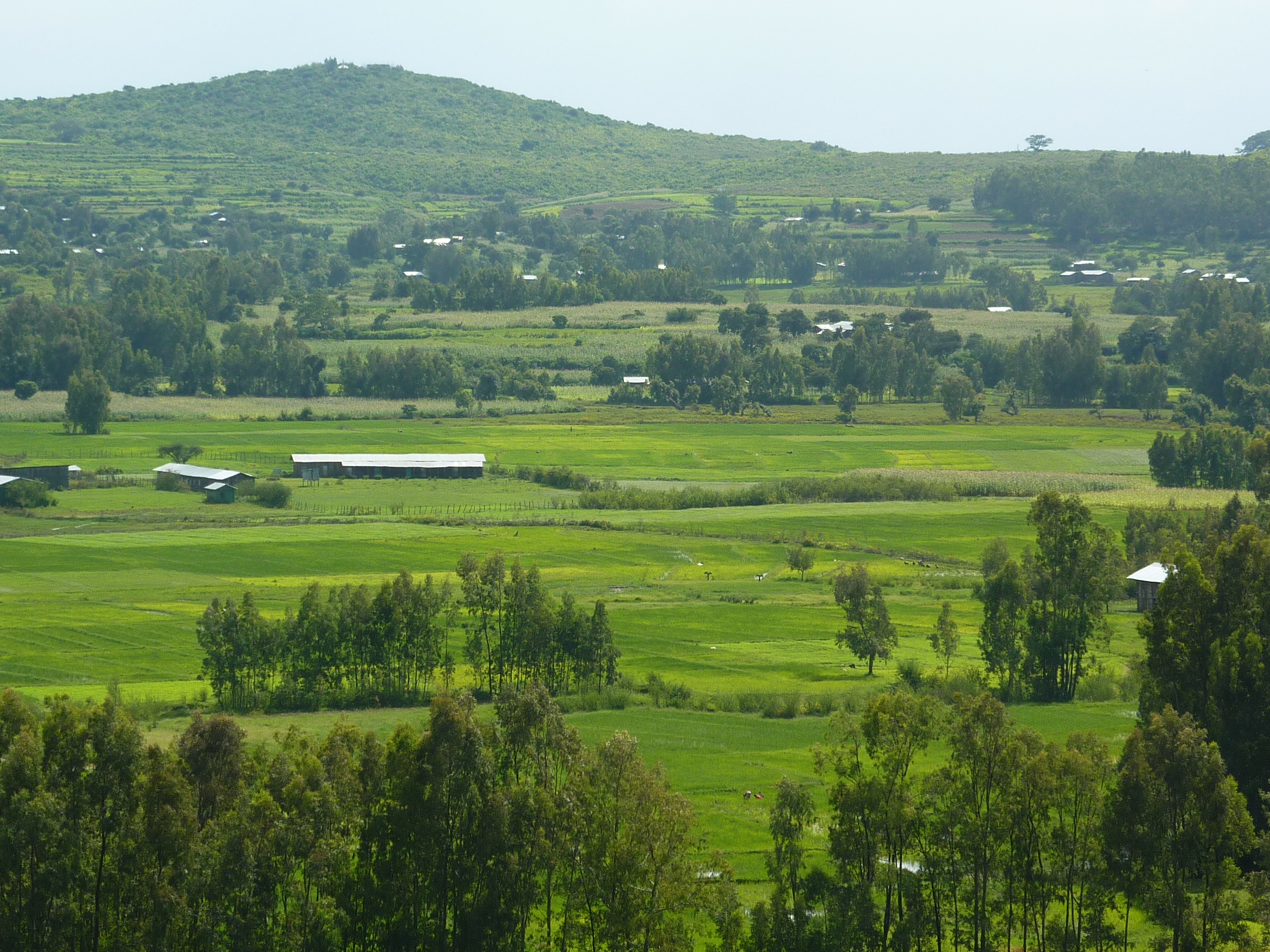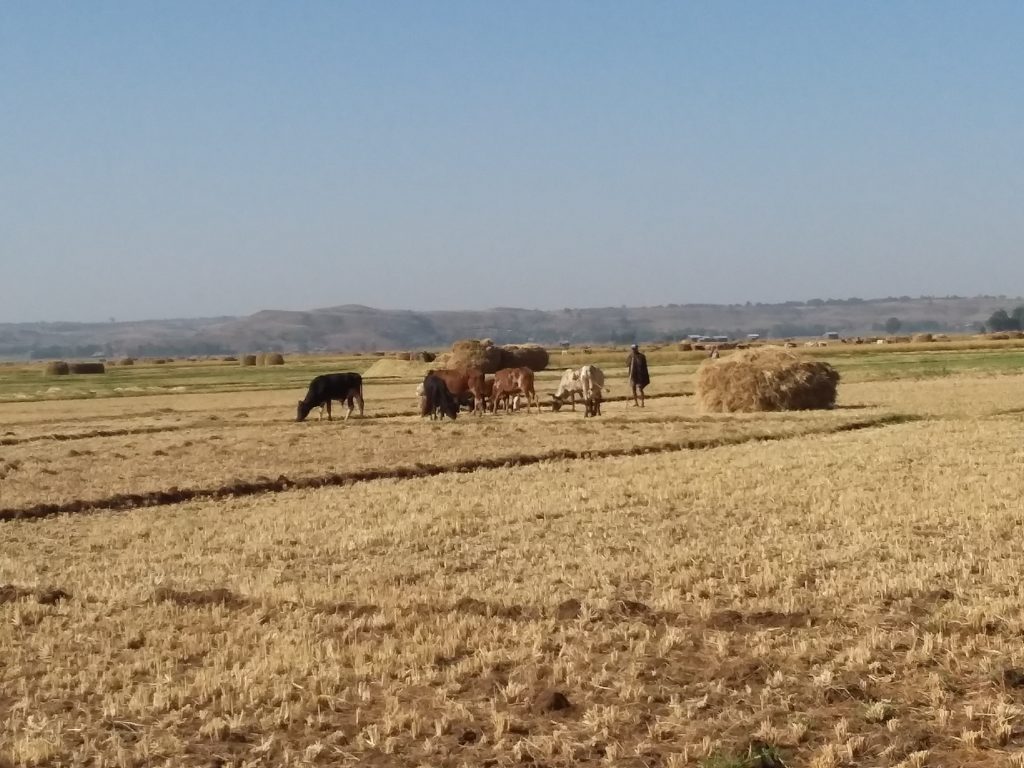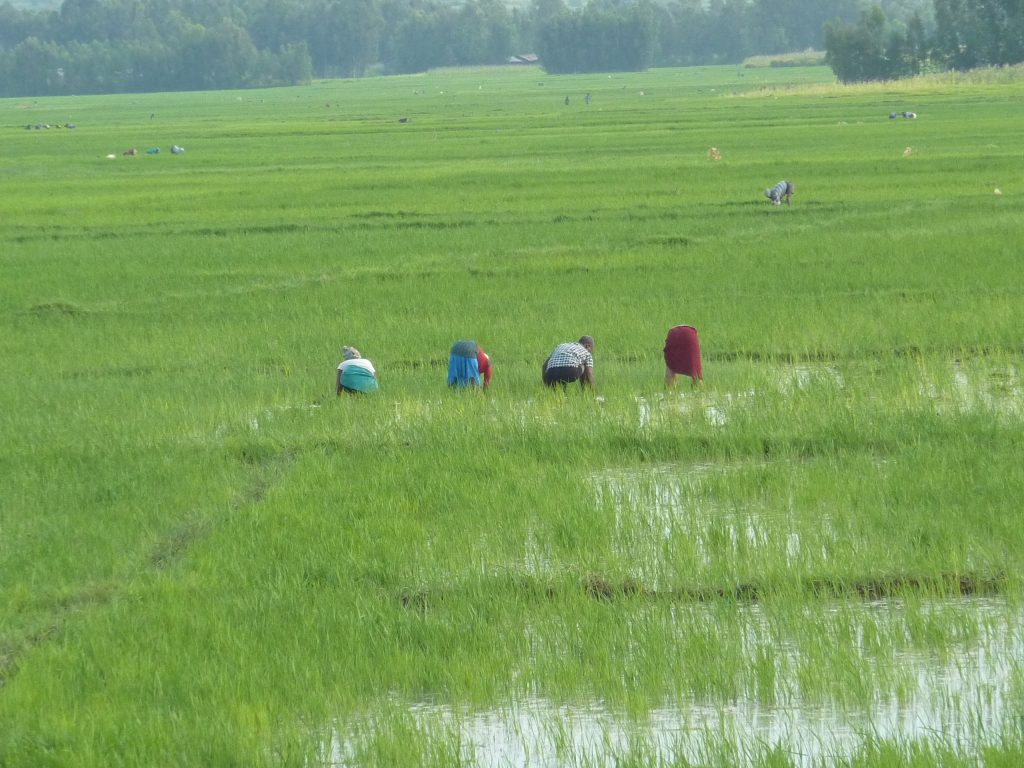Rice commercialisation, agrarian change and livelihood trajectories: Transformations on the Fogera Plain of Ethiopia

Written by: Dawit Alemu
This blog summarises APRA Working Paper 61, which explores the commercialisation of rice in Ethiopia since its introduction in the early 1970s. This process has evidenced wider agrarian changes that have contributed to the emergence and development of diverse livelihood options. The paper presents the role of increased rice commercialisation for the observed agrarian changes and the livelihood trajectories, based on both primary and secondary data sources generated from the Fogera plain.
Rice commercialisation and agrarian changes
Rice is a relatively new crop in Ethiopia. Its introduction was linked with the quest to address the challenges of different public interventions on food security and resettlement during the Derg Regime (officially the Provisional Military Government of Socialist Ethiopia). In recent years, the crop has grown to become one of the country’s most important commodities both in terms of domestic production, import and overall consumption.

With increased commercialisation of rice, there have been diverse and dynamic changes in agrarian relations in the Fogera Plain. In general, agrarian change is associated with changes in farming systems, land tenure, labour and other input markets, rural-urban linkages and changing social relations. In this regard, we identify five main processes of agrarian change affected by, and affecting, rice commercialisation in the Fogera Plain. These are: i) changes in the farming systems; ii) dynamism in the land tenure systems; iii) changes in rural labour and gender relations, iv) changes in the type and use of agricultural technologies; and (v) changes in rural markets and rural-urban linkages.
- Farming system dynamics: The introduction and expansion of rice in the Fogera Plain has brought considerable land use change with differentiated results in the two major agroecological zones found in the area (Lowland and Upland). Rice production was unknown in the upland areas of the Fogera Plain some three decades ago. Linked with the introduction of upland rice varieties through the national research system, the production of rice has emerged as one of the primary production options. Accordingly, the production of rice, other cereals, and vegetables has been increasing while there has been a decline in the importance of oil crops and livestock in the upland areas. The lowland agroecological zone has been the most food insecure area in Fogera due to persistent flooding and waterlogging during the main production season. Accordingly, livestock and pulses that grow on residual moisture play an important role in the livelihoods of smallholders. With the introduction of rice and its subsequent commercialisation, however, the lowland areas have become increasingly food secure with increased investment in supplementary irrigation for vegetable production. As a result, the importance of livestock (Fogera cattle breed) has considerably declined.
- Land tenure dynamics: Increased agricultural commercialisation has been among the key factors leading to the emergence of different forms of land transfer mechanisms, with associated challenges and opportunities. Under the prevailing policy frameworks, the land markets in Fogera Plain follow two approaches, namely land sharing and leasing, which are either formal or informal legal arrangements. In addition, due to an increase in the number of landless youths, former common grazing lands have been administratively allocated to landless youth farming families estimated at 1,600ha of land for 2,950 young families only in Fogera district.
- Dynamism in rural labour markets: Fogera Plain used to be a source of migrant labour. However, the expansion and intensification of rice production in the region has contributed to the emergence of a thriving off-farm labour market, which is able not only to absorb the available excess labour but also to attract labourers from other areas. Demand for unskilled rural labour for land preparation, cultivation, weeding, harvesting, product sorting and loading, and similar activities has grown considerably, and estimates indicates that 55.4 per cent of rice farmers use hired labour for operations such as ploughing, weeding, harvesting and/or threshing.
- Changes in the type and use of agricultural technologies: Farmers reported an increased use of modern agricultural technologies such as quality seed of preferred varieties, agro-chemicals (chemical fertiliser, herbicides and pesticides), and irrigation technologies (water wells and pumps).
- Changes in rural markets and rural-urban linkages: Rural input and output markets in the Fogera Plain have been expanding as rice production and commercialisation have increased and demand for rice and rice products has grown, both locally and regionally. A dynamic land market has emerged (mainly related to land rent), as well as rural agricultural product markets, private rural services (input suppliers, transport providers, processors, etc.), and brokerage locally called ‘Delala’. These changes have led to the perception of the Fogera Plain among both government officials and local people as a land of surplus with diverse livelihood options, rather than a land of persistent poverty and food insecurity. This is the primary reason as to why farmers in the region call rice “our white gold”.

Livelihood trajectories and impacts
The expansion of rice production and its commercialisation has brought diverse livelihood improvements directly to farming households in Fogera. Other actors in the rice value chain have also benefitted directly from the spill-over effects in terms of non-farm investments linked to increased farm household income. Indirectly, growing incomes from rice have led to increased demand for goods and services that have attracted investment in different sectors, including hospitality, banking, transportation, wholesale and retailing.
Conclusion
We conclude that the assessed trends indicate clear evidence of the importance of rice commercialisation for bringing dynamism to agrarian changes and livelihood options in the Fogera Plain. These changes have led to the improved perception of the Fogera Plain among both government officials and local people. Accordingly, we recommend that the evidence is scaled up to other identified rice growing areas of the country, if the country is to ensure its self-sufficiency in rice.
